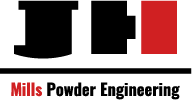Choosing the Right Grinding Solution Can Make—or Break—Your Powder Performance
Whether you’re producing lithium battery materials, pharmaceutical ingredients, mineral powders, or specialty chemicals, one thing is clear: particle size matters. The type of mill you choose plays a critical role in your final powder’s size, purity, flowability, and functionality.
Two of the most widely used technologies in powder processing are Jet Mills and Mechanical Mills. But how do they differ—and more importantly, which one is right for your application?
Let’s break it down.
What Is a Jet Mill?
Jet mills grind materials using high-velocity compressed air or gas streams. Particles are accelerated through nozzles and collide with each other in a grinding chamber, leading to ultra-fine size reduction without direct mechanical contact.
Key Advantages:
- Ultra-fine particle size: D50 down to 2–5μm
- No contamination: Ideal for high-purity or reactive materials
- Sharp particle size distribution
- No heat buildup: Good for heat-sensitive materials
Jet mills are especially popular in lithium battery, pharmaceutical, cosmetic, and electronic ceramic industries, where precision and purity are critical.
What Is a Mechanical Mill?
Mechanical mills use rotating components (e.g., blades, hammers, rollers) to grind materials through impact, shear, or compression. Common examples include impact mills, roller mills, and Raymond mills.
Key Advantages:
- Simple, robust structure
- Good for medium to fine grinding (D50 ~20–100μm)
- Lower energy consumption
- Lower cost of ownership
Mechanical mills are widely used in mineral processing, construction materials, food powders, and industrial fillers.
Jet Mill vs. Mechanical Mill: Side-by-Side Comparison
| Feature | Jet Mill | Mechanical Mill |
| Grinding Method | Air-driven particle collision | Mechanical impact or compression |
| Particle Size Range | D50: 2–10μm | D50: 20–100μm |
| Contamination Risk | Extremely low (no media contact) | Moderate (contact with metal parts) |
| Best for | High-purity, heat-sensitive materials | Robust, general-purpose materials |
| Energy Consumption | Higher | Lower |
| Maintenance Complexity | Medium (precise parts) | Low (easy to maintain) |
| Investment Cost | Higher | Lower |
Which Mill Is Right for You?
Let’s look at some practical application examples:
✅ Use Jet Mill if…
- You are processing graphite, LiFePO₄, Si/C, or pharmaceutical actives
- You need ultra-fine, narrow particle distribution
- Your powder must be free of contamination
- You produce high-value, low-volume materials
✅ Use Mechanical Mill if…
- You’re grinding calcium carbonate, barite, talc, pigments, or food additives
- You need medium fineness with high throughput
- Your budget is limited, or energy cost is a concern
- You prefer easy-to-maintain, durable equipment
Need Help Choosing? We’re Here to Help.
At Mills Powder Engineering, we manufacture both Jet Mills and Mechanical Mills (Impact, Roller, Raymond), and we understand the trade-offs. Our engineers can help you select the most cost-effective, performance-optimized solution for your specific powder material.
📩 Contact us today to schedule a consultation or get a quote:
👉 www.millspowder.com/contact
